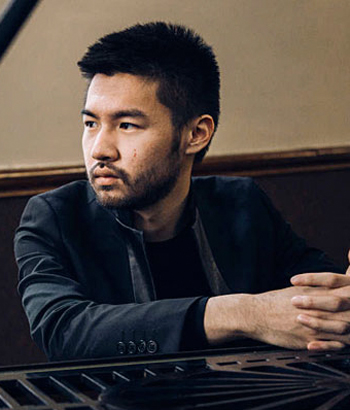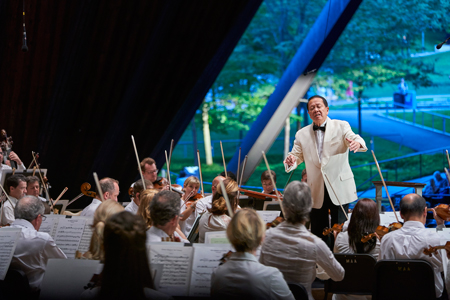by Rory O’Donoghue

Out of Prokofiev’s five piano concertos, the third has long been the most popular and critically lauded. The composer’s signature idioms are all over it — the marriage of tuneful lyricism with witty dissonance, music that is at once both complex and free — and the infectious, exciting material often makes for a thrilling concert. But Tao’s performance was of another, higher variety entirely.
Clarinetist Robert Woolfrey shined in the solo that opens the “Andante — Allegro,” an invocation that then gathers the flutes and high strings together into a lovely pastoral haze. In an instant the landscape changes, with new momentum ushered in by the low strings, and the whole orchestra bubbles up in a frenzied ascent, preparing for the piano’s dramatic entrance. From his very first few notes, Tao set the course for the rest of the piece — his rendition would be lightning fast, but still brimming with emotion and musical sensitivity.
Ling was adept at keeping the Orchestra together with Tao, whose blistering pace could have spun the whole thing into chaos. Following the exhilarating opening, Tao created an austere atmosphere with his phrases in the “Tema con variazioni,” mimicking the bouncing articulations of the woodwinds. Ling started the bassoons and string pizzicatos fast at the beginning of the “Allegro ma non troppo,” but Tao jumped in and kept everything pushing forward, generating electrifying energy.
In the world of solo pianists, blistering, robotic technique is almost a dime a dozen, but Tao distinguished himself by the colorful shape and elasticity he brought to even the fastest phrases. He attacked the offbeat concluding music with both ferocity and a keen sense of line, bringing out the very best of the concerto’s robust, youthful energy. After a boisterous ovation, he said that he would “like to change the piece a bit,” and played a transcription of the “Largo” from Bach’s Third Violin Sonata. Especially in contrast to the chaotic Prokofiev, this understated encore was a perfect, revelatory choice.
As a lovely precursor to the concerto, Ling led the Orchestra through an inspired performance of Mussorgsky’s “Dawn on the Moscow River,” the prelude to the opera Kovanshchina. The piece contains many lovely melodies, including a pioneering oboe solo that inexplicably verges on Americana, and other beautiful woodwind interplays. Accompanied by the birds tweeting throughout Blossom’s grounds, the waking river scene felt almost tangible.
The evening ended with Tchaikovsky’s immortal Symphony No. 4, which The Cleveland Orchestra plays phenomenally. The brass section was in tip-top shape, ringing out magisterially, and the strings moved as one. Playful bassoon and clarinet dialogues mirrored those from the glimmering flutes and oboes, and each solo could have won the job in an audition setting. Although the string pizzicatos could barely be heard in the third movement, the Orchestra clearly loves Ling, and responded faithfully to his direction. When the opening “fate” motive returned in the fourth movement, the evening came full circle, and the rest of the “Finale” was resplendent.
Blossom photo of Jahja Ling by Roger Mastroianni from an earlier concert.
Published on ClevelandClassical.com July 26, 2019.
Click here for a printable copy of this article




